#Gary Snyder
Quote
Nature is not a place to visit. It is home.
Gary Snyder, The Practice of the Wild
#Gary Snyder#motivation#quotes#poetry#literature#relationship quotes#writing#original#words#love#relationship#thoughts#lit#prose#spilled ink#inspiring quotes#life quotes#quoteoftheday#love quotes#poem#aesthetic
138 notes
·
View notes
Quote
Nature is not a place to visit. It is home.
Gary Snyder, The Practice of the Wild
#Gary Snyder#motivation#quotes#poetry#literature#relationship quotes#writing#original#words#love#relationship#thoughts#lit#prose#spilled ink#inspiring quotes#life quotes#quoteoftheday#love quotes#poem#aesthetic
431 notes
·
View notes
Text

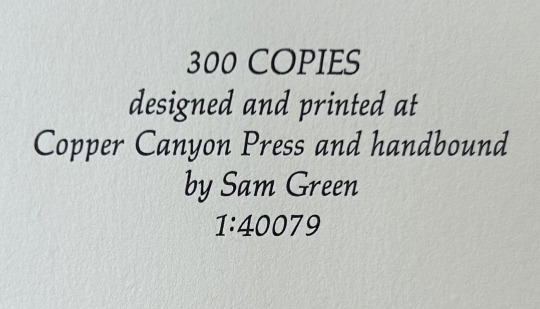
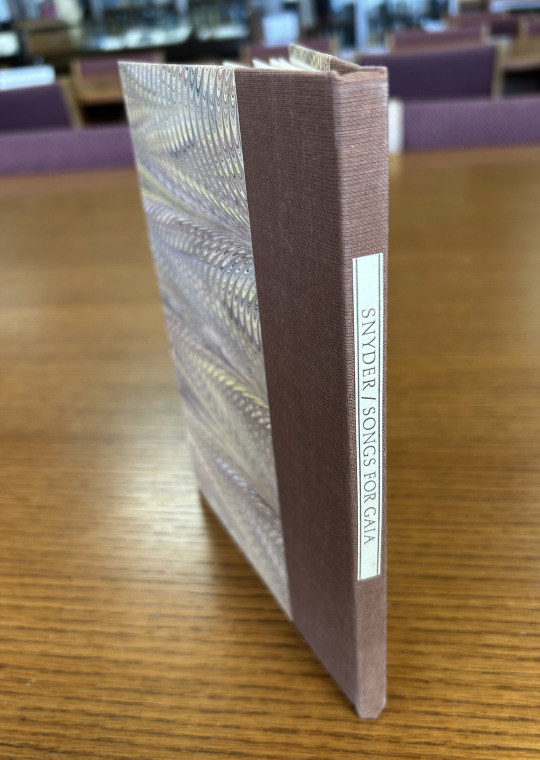







It’s Fine Press Friday!
Today we’re taking a deep dive into Songs for Gaia, a slim edition of poetry by Gary Snyder (b. 1930). This understated, beautifully-crafted letterpress volume was printed in 1979 for Kah Tai Alliance at Copper Canyon in Port Townsend, WA, a fine press dedicated solely to poetry since its founding in 1972, and was handbound by poet and bookbinder Samuel Green. It features woodblock illustrations by poet and printmaker Michael Corr (b. 1940), who learned his craft while living in Kyoto from block printer and illustrator Takeji Asano (1900-1999). Asano was a notable figure in Japan’s Sōsaku-hanga woodblock printing movement. The book is quarter bound in cloth with a cover marbled in a finely executed combed feather pattern, a touch that lends a hint of psychedelia to its otherwise traditional aesthetics. It was released in a limited edition of 300 copies.
Snyder, who is popularly known for his time amongst and spiritualist influence on the Beat poets and the counterculture of their generation (along with Kerouac’s portrayal of him as Japhy Ryder in the 1958 novel The Dharma Bums) spent 13 years in Japan (1956-1968) studying Zen Buddhism, forestry, and ecology. A scholar of Asian languages versed in cultural anthropology, he also studied calligraphy with accomplished calligrapher and seal carver Charles Leong during his time at Reed College. Snyder’s calligraphic signature graces the half-title page of this edition.
This modest yet potent edition of Songs for Gaia is a fitting form for the work of a poet whom writer Bob Steuding once characterized as cultivating an “accessible” style and “a new kind of poetry that is direct, concrete, non-Romantic and ecological.” As Snyder wrote of his own work in A Controversy of Poets, “I try to hold both history and wilderness in mind, that my poems may approach the true measure of things and stand against the unbalance and ignorance of our times.”
View more Fine Press Friday posts
View more woodblock illustration posts
View more marbling posts (shout out to Alice, our resident marbling expert!)
-Ana, Special Collections Graduate Fieldworker
#Fine Press Friday#fine press fridays#marbling#Gary Snyder#poetry#Copper Canyon Press#Songs for Gaia#Samuel Green#Michael Corr#woodblock illustration#woodblock#letterpress#fine press#feather pattern marbling#UWM Special Collections#handbound book#hand binding#Ana
61 notes
·
View notes
Quote
Nature is not a place to visit. It is home.
Gary Snyder
556 notes
·
View notes
Quote
Nature is not a place to visit. It is home.
Gary Snyder, The Practice of the Wild
#Gary Snyder#motivation#quotes#poetry#literature#relationship quotes#writing#original#words#love#relationship#thoughts#lit#prose#spilled ink#inspiring quotes#life quotes#quoteoftheday#love quotes#poem#aesthetic
84 notes
·
View notes
Text

The Practice of the Wild | Artwork by Tiffen Python
* * * *
"An ethical life is one that is mindful, mannerly, and has style. Of all moral failings and flaws of character, the worst is stinginess of thought, which includes meanness in all its forms. Rudeness in thought or deed toward others, toward nature, reduces the chances of conviviality and interspecies communication, which are essential to our physical and spiritual survival."
by Gary Snyder
[thanks Leila L'Abate]
37 notes
·
View notes
Text
Pine Tree Tops
by Gary Snyder
In the blue night frost haze,
the sky glows
with the moon
pine tree tops
bend snow-blue, fade
into sky, frost, starlight.
The creak of boots.
Rabbit tracks, deer tracks,
what do we know
244 notes
·
View notes
Text
As a poet I hold the most archaic values on earth . . . the fertility of the soil, the magic of animals, the power-vision in solitude, the terrifying initiation and rebirth, the love and ecstasy of the dance, the common work of the tribe. I try to hold both history and the wilderness in mind, that my poems may approach the true measure of things and stand against the unbalance and ignorance of our times.
Gary Snyder
#book quotes#nature quotes#gary snyder#nature#nature writing#literature#books and libraries#books and reading#simple life
61 notes
·
View notes
Quote
Nature is not a place to visit. It is home.
Gary Snyder, The Practice of the Wild
#Gary Snyder#motivation#quotes#poetry#literature#relationship quotes#writing#original#words#love#relationship#thoughts#lit#prose#spilled ink#inspiring quotes#life quotes#quoteoftheday#love quotes#poem#aesthetic
62 notes
·
View notes
Quote
Nature is not a place to visit. It is home.
Gary Snyder, The Practice of the Wild
#Gary Snyder#motivation#quotes#poetry#literature#relationship quotes#writing#original#words#love#relationship#thoughts#lit#prose#spilled ink#inspiring quotes#life quotes#quoteoftheday#love quotes#poem#aesthetic
88 notes
·
View notes
Quote
Nature is not a place to visit. It is home.
Gary Snyder, The Practice of the Wild
#Gary Snyder#motivation#quotes#poetry#literature#relationship quotes#writing#original#words#love#relationship#thoughts#lit#prose#spilled ink#inspiring quotes#life quotes#quoteoftheday#love quotes#poem#aesthetic
221 notes
·
View notes
Quote
Nature is not a place to visit. It is home.
Gary Snyder, The Practice of the Wild
#Gary Snyder#motivation#quotes#poetry#literature#relationship quotes#writing#original#words#love#relationship#thoughts#lit#prose#spilled ink#inspiring quotes#life quotes#quoteoftheday#love quotes#poem#aesthetic
554 notes
·
View notes
Text
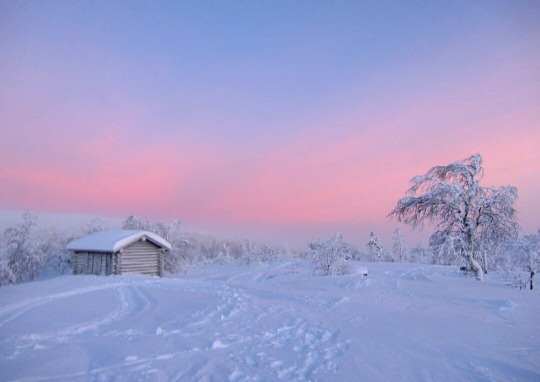
nature is not a place to visit. it is home.
— gary snyder
#photography#photography aesthetic#nature#nature aesthetic#nature photopragpy#nature photo art#winter#winter aesthetic#winter photography#photographers on tumblr#pinterest#gary snyder#quotes#nature quotes
60 notes
·
View notes
Text
How Leaky Gut, Gary Snyder, Jim Harrison, and Okakura Kazuko Helped Me Rediscover Coffee.
Or, My Dad was a Zen Master, and I Didn’t Notice.
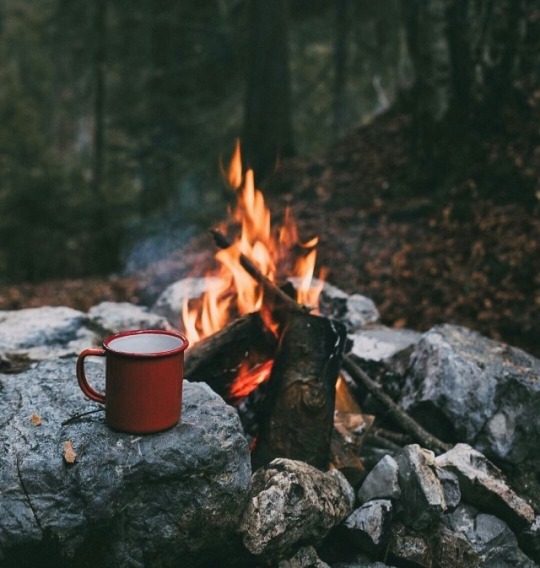
Zen is not some fancy, unique art of living. Our teaching is to live, always in reality, in its exact sense.
Shunryu Suzuki
It began simple enough, well, not that simple. The Traditional Chinese Physician diagnosed my partner with leaky gut syndrome. That sounds terrible, and it was for her. She loved boxed prepared foods and was not fond of vegetables. Time and malnutrition brought on by General Mills, Conagra, and a variety of corporate food chemists had caught up to her, killing the terrarium in her gut so that everything she ate penetrated past the lichen-like lining of her intestines and digestive tract so acid ate at the inner skin like a chemical spill eating the epoxy resin on a high school science class table. This acid wash triggered various autoimmune disorders and led to arthritis, diarrhea, malaise, and general misery for her and those around her. She spent a lot of time in the bathroom, travel was curtailed, and there was general unhappiness all around because the irritation in her gut often seeped out of her vocal cords.
The Physician approached me in the waiting room. At the same time, my partner lay in a private room with needles, restoring her chi into its proper channels and outlining the changes needed in our lifestyle to cure this plague of misery. The doctor told me I also needed to join the new dietary regime to be supportive.
“Well, OK,” I said with outward unfelt enthusiasm.
So we went home and cleaned cabinets, throwing packaged foods away and feeling pangs of guilt — should we throw it away or give it to a shelter? I had visions of homeless people excitedly getting free food that passed as quality and eventually needing a traditional Chinese physician to tell them why they had started crapping so much and with such urgency. I took it to the dumpster, deciding that if they dove for it, it would at least not be the typical garbage they found to eat there that already messed up their guts and energy meridians, contributing to a miserable lifestyle. Their choice would not be my responsibility. I am, after all, an American and well-practiced at ignoring or at least rationalizing my guilt at ecological and cultural destruction. The dumpster became my version of a clear-cut in Oregon. Behind twenty-five yards of pristine natural beauty and unseen from the speeding motorists on the interstates is a desolated waste that can only support the lifestyle of the rich and infamous. To paraphrase an adage from pop psychology, “What we don’t think about, we pretend we don’t bring about.”
And then there was the Mr. Coffee. It sat on the kitchen counter, a yellowing plastic oddly shaped box protectively embracing a clear glass carafe that produced without much effort or thought a dark brown nectar that started our day. It was simple: you pulled out the black plastic cup, lined it with bleached paper, measured several small scoops of coffee, replaced the black plastic cup, filled the box with water, hit the button, and left the room, knowing the watery brown liquor would be ready after the morning shower and shave. Frankly, I was addicted to the tasteless brown water that came out, full of caffeine that gave me a lift but no longer a sweet aroma, depth of flavor or anything but a buzz. The Physician said that they had to go. The little lichen and animal-like bacteria in the gut didn’t like the acid. She equated it with Agent Orange. Being of a certain age, I was more familiar with Agent Orange than I wanted or should be, and I suspect she knew that just by looking at my grey hair. She was playing dirty there, but “Well, OK.”
So Mr. Coffee went somewhere. I didn’t ask because I didn’t want to become like stomach acid and create more irritation. To ease the pain, I read an article by a Buddhist who said he quit coffee for six months and felt great but eventually had a cup of the dark roast at Starbucks. He didn’t get a buzz but got jazzed for two days. That didn’t help as I read his article while drinking weak green tea with ginger, waiting for caffeine-induced enlightenment.
As a caffeine junkie and failed Roshi, I needed some relief. Each morning, I scrolled Tumblr’s pictures while drinking my tea and tried to distract myself from the lack of coffee and junk food. Before I went to Tumblr and its processed version of the good life, I had returned to Zazen, you know, meditative sitting, but I was haunted by Buddhist demons carrying Starbucks cups. That was akin to the demons I had seen as a young college student Buddhist “wannabe” reading Alan Watts and D.T. Suzuki, practicing their version of sitting zazen. The forms Mara took in those sittings mostly looked like the red-headed girl I was dating. She would arise in my meditations dancing with her female roommate, both naked dakinis looking beguilingly at me, beckoning me. Needless to say, I never found a Bodhi tree as lovely as Keanu Reeves’ in Little Buddha. I usually went to the red-headed girl’s apartment, leaving my cat to fend for herself for several days. The cat was often irritated with me — the story of my life with females.
Giving up zazen for scrolling Tumblr didn’t help much. There were many beautiful images of landscapes, cityscapes, horses, wildlife, and old trucks and cars. It is a veritable Life magazine online, and being a trained art historian studying reproductions of pictures was right up my alley. There were many images of beguiling dakinis, but more provocatively undressed than those I showed freshmen when I taught art history. As an old man, experienced in the wiles of youthful Dakinis, they looked generally unbeguiling and un-tempting. Sometimes, they wore a plaid flannel shirt tied above the waist, standing next to a campfire, or sitting on the tailgate of a pickup, holding a tin cup of coffee; those got to me — I love plaid, and there was coffee. Even more painfully, there were camping pictures, not just any camping pictures but old percolators on campfires, some with steam coming out of their spouts, some with the cooked brown fluid being poured into cups. As I hit the little heart to acknowledge I liked those images, they appeared more and more frequently. I began to seriously think there were hells, Buddhists and otherwise, and real demons determined to steal my peace.
I was not always addicted to coffee. It all began next to the Seine at a little cafe on the Boulevard Saint-Germain, where I first tasted café au lait. I was a typical 18-year-old 1970s kid backpacking through Europe, and Paris was a first stop. I hated wine and was not too fond of beer, though I drank large quantities with friends at college my first term, and Perrier was breaking my travel budget. One day, I learned that café au lait was mostly milk, and being a farm boy still wedded to the idea that milk was good for me, I downed a cup of café au lait, then another and another. At the end of my first sitting, the waiter counted eight saucers and asked if “Monsieur was feeling okay.” “Sure,” I replied with composure I didn’t feel. I left the café, strolled down the Qui Voltaire, crossed the river on the Pont de la Concorde, hiked through the Tuileries and toured the entire Louvre in 45 minutes flat.
I continued my travels in Europe and tried every type of coffee I could find, settling on Turkish coffee in little cups with big cubes of sugar. In a pinch, I would accept espresso, but by the time I got to Italy, espresso seemed a weak way to live.
Then I returned to America, tried various diner coffees, and wondered why they served browned hot water. By then, Mr. Coffee had replaced percolators and any other form of making coffee all across America. Joe DiMaggio was happy and smiling on every new box containing a coffee maker and heading to an American home.
I tried to make Turkish coffee. Generally, I failed and finally settled on strong home-brewed Mr. Coffee with lots of heavy cream. I would occasionally daydream about camping with my parents and blue-speckled-ware coffee pots on the fire or the aroma of the coffee their electric percolator made as it rhythmically gurgled in the kitchen. It never occurred to me to get an electric percolator because they were, thanks to Mr. Coffee, passe and un-American. I also avoided percolator coffee because I associated it with the odor of my parent’s cigarettes. No matter how good the coffee smelled, I had an aversion to their cigarettes and my parents. Therapy helped me overcome my aversion to my parents but not cigarettes, and the association of stale, burned, chemical-treated tobacco and perked coffee remained.
I felt good after six months of a healthy life, eating right, losing weight, and spending less time on the toilet. I still, however, craved caffeine. I started looking at Mr. Coffee online and realized it was a version of pour-over coffee. So, I bought a plastic two-cup Merlita sit-on-the-cup pour-over device. It was an odd orange-pink affair, but It made a good single cup of coffee, and I discovered that the two-cup size worked just fine to make a single cup of coffee. I understood that a pour-over made better coffee than Mr. Coffee, even though the process was the same. The two-cup pour-over process did require me to pay attention to what I was doing.
This pour-over coffee period came while I re-read Gary Snyder and Jim Harrison, two old Buddhists who were even grouchier than me. They got me rethinking, too, about the practice of the wild and how aggravated I was with General Mills and Conagra and the whole mess of modern American consumerism I allowed myself to get sucked into. I realized I missed camping, hiking, and the smell of coffee perking on an open campfire. I truly missed robust campfire coffee with its flavor and aroma.
I bought an Italian Bialetti Moka pot to remain civilized about my need for aroma. ( I didn’t say I escaped consumerism, just I was aggravated with it.). As I entered the ritual each morning of making coffee in a Moka pot, so strong that I had to serve it in tiny espresso cups to keep the buzz low, I realized that making coffee was really about paying attention, like a Japanese tea ceremony. It took time and required focused measuring of the coffee, packing the funnel, preheating the water, a degree of zazen, listening for the gurgle of the pot and knowing when to take it off the heat so it did not get bitter. I liked the meditation of preparing it. I hated the tiny, over-caffeinated cups. ( My coffee fast had at least broken my addiction to triple-dose caffeine.)
Then we had a cold front, I mean a really cold front that made me wish I had remembered to close the windows the night before, and I had visions of camping, dakinis in plaid flannel shirts, me in plaid flannel shirts, lakes and campfires and a percolator on the fire. It was a memory of connection and loss rolled into one. I was young, and it was a time before Alan Watts and D.T. Suzuki when I knew how to sit, breathe, watch, observe, be present, and smell the coffee with childlike naturalness. So, back to the consumer websites. I scanned a couple dozen percolators. Being aware that I had to make sure I was not as irritating as stomach acid in my choice, I picked a shiny stainless steel eight-cup percolator over the twelve-cup spatterware blue of my encamped youth. Two days later, it arrived and posed gloriously on my stove. Even my partner admitted to its silvery beauty.
I then read internet manuals on how to make the perfect pot of percolator coffee. They all disagreed about the amount of coffee, timing, and type of coffee. Then I remembered my dad, carefully spooning a heaping tablespoon of coffee per 6-ounce cup of water and one for the pot. I remembered how, while he measured his coffee into the basket, the pot would sit on a rock on the fire’s edge and come to a boil. He would gently lower the full basket into the boiling water, place the lid on the pot and move the pot away from the heat, allowing it not to boil vigorously but return to a slow boil so the coffee would not become bitter. And then he would wait, light a cigarette when the water would start its gentle dance in the glass cap of the lid. While he waited, he watched the perking water in the glass knob at the top of the pot without fidgeting or seeming to allow his mind to race away with him. And at the end of his cigarette, after his short version of meditation, he would lift the pot from the fire, place it on another warm but not hot rock, wait again for the basket to finish draining into the pot and remove the basket so the coffee would not become bitter, pour his mug of coffee, and sit again. Still, this sitting involvedwatching the forest and just being. The memory reminded me of Okakura Kazuko’s “Book of Tea,” his extended essay about aesthetics, tea, and Japanese life. As I remembered my Dad by the campfire, I realized Mr. Coffee’s plastic convenience erased coffee’s aesthetic from American life.
I have discovered that Coffee is not just a daily punch line at Starbucks with crazy concoctions snatched by a string of crazier motorists, nor is it the caffeine jazz you get from a neglected Mr. Coffee after a shower and a shave. Making coffee is a meditation, an act of beauty, a reminder of history and a rare act of America behaving in a more civilized way. In the Book of Tea, Kazuko comments, “The Westerner regarded Japan as barbarous while she indulged in the gentle arts of peace and began to call her civilized only when she began to commit wholesale slaughter on the Manchurian battlefields.” I realized that Mr. Coffee not only made barbarous coffee (we won’t even discuss Keurig), but Mr. Coffee was part of our uncivilized behavior toward the entire world, eliminating a small act of spirituality from our racing over-wrought lives.
I now regard the loss of Mr. Coffee not as a loss. It is a spiritual gain. Each morning now, I conduct a ritual. I rinse all my utensils, fill the pot with eight six-ounce measures of clean water, eight heaping tablespoons of freshly ground coffee and one for the pot. I bring the water to a boil, carefully insert the coffee, and place the lid on the pot. I watch until the water rises into the glass knob and then sit, and breathe for eight minutes, the amount of time I think it would have taken Dad to smoke a cigarette. I remove the pot and sit long enough to allow the water to finish draining from the basket, remove the basket and pour coffee into a mug reserved just for coffee, the one with the horses standing in a stream, drinking clear water. And then slowly sip while I sit on my porch, looking at the mountains. When it is cool enough, I wear a plaid flannel shirt and remember a time in my youth watching my father, who had never heard of Alan Watts, D. T. Suzuki, or Zen, sit his version of Zazen drinking his coffee, smoking one of his ever-present cigarettes looking out over a campfire at the lake and being at peace and away from the “chaos of the rat race,” as he defined it.
Maybe being a Roshi is realizing that life itself is Zazen if you slow down and allow it to be. Today, I lifted my cup to a man who was my Roshi that I didn’t notice. I suspect we all have such untitled Zen teachers.
15 notes
·
View notes
Text
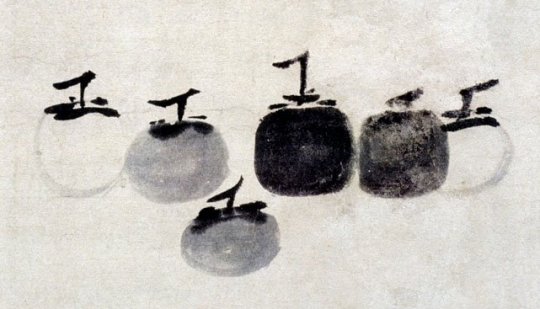
Painting By Mu-Chi
* * * *
"The best in the world, I say,
of persimmons
Perfect statement of emptiness
no other than form"
FROM Gary Snyder
"The Present Moment" New Poems
[Red Pine (translator) :: Bill Porter (author)]
9 notes
·
View notes
Text
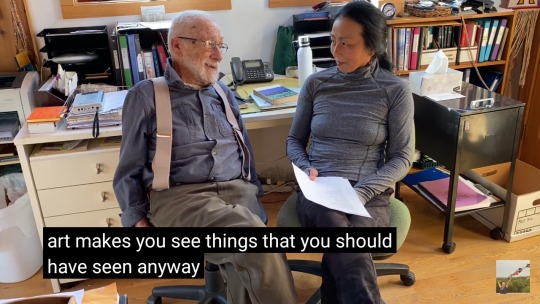


Gary Snyder’s Axe Handles and the Magic of Poetry and Translation
#if you have read the dharma bums by jack kerouac he is japhy ryder!!#the dharma bums is better than on the road imho#gary snyder#poetry#beat generation#thank you youtube user ping wang loved all the videos with himmmmmm
95 notes
·
View notes